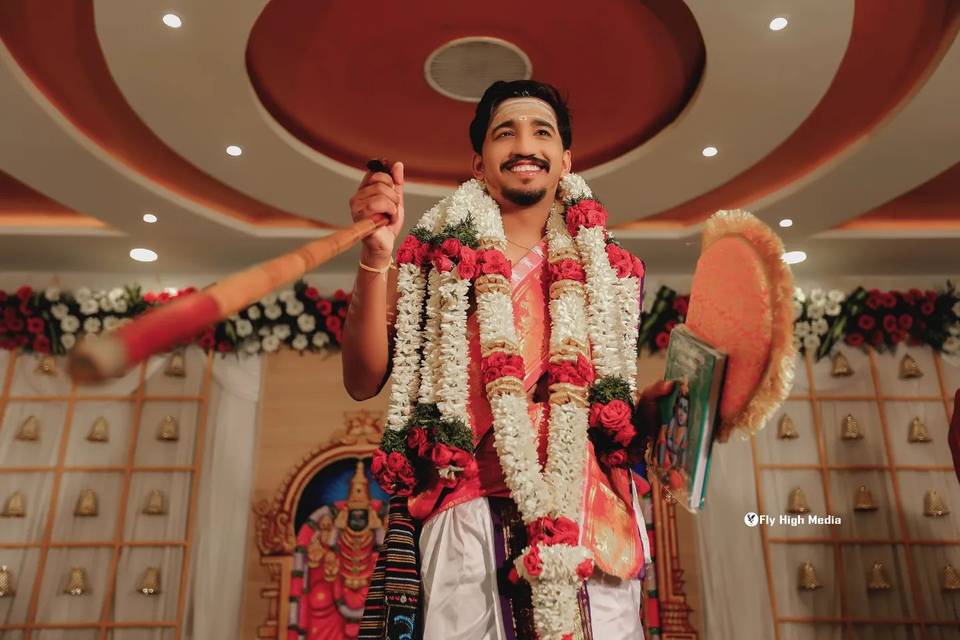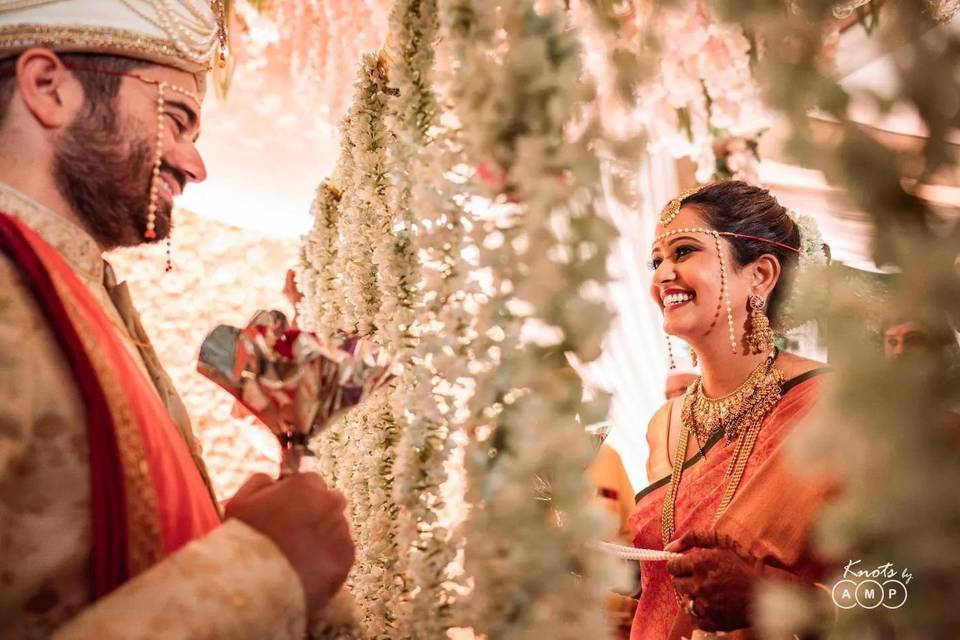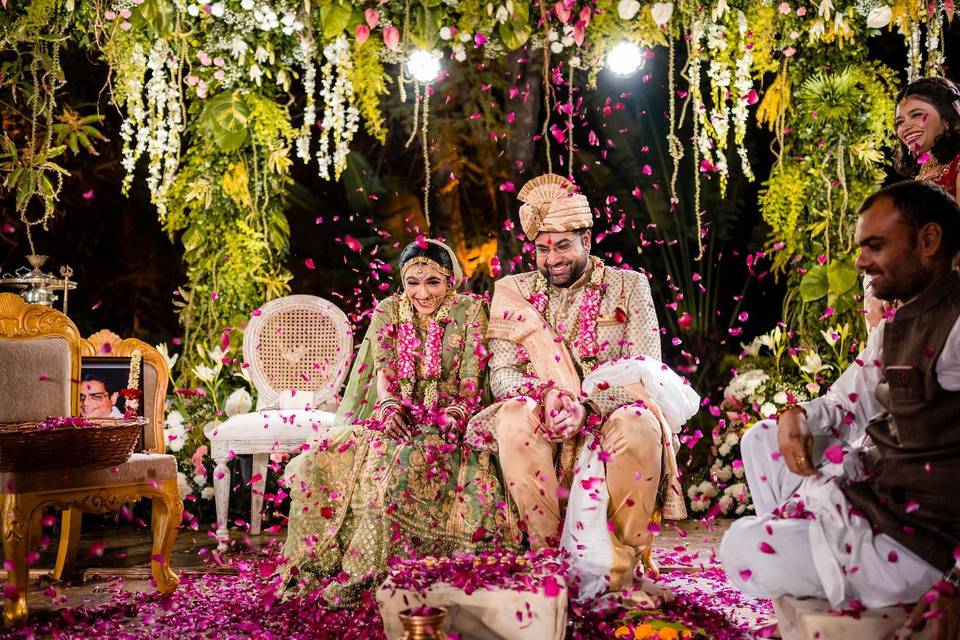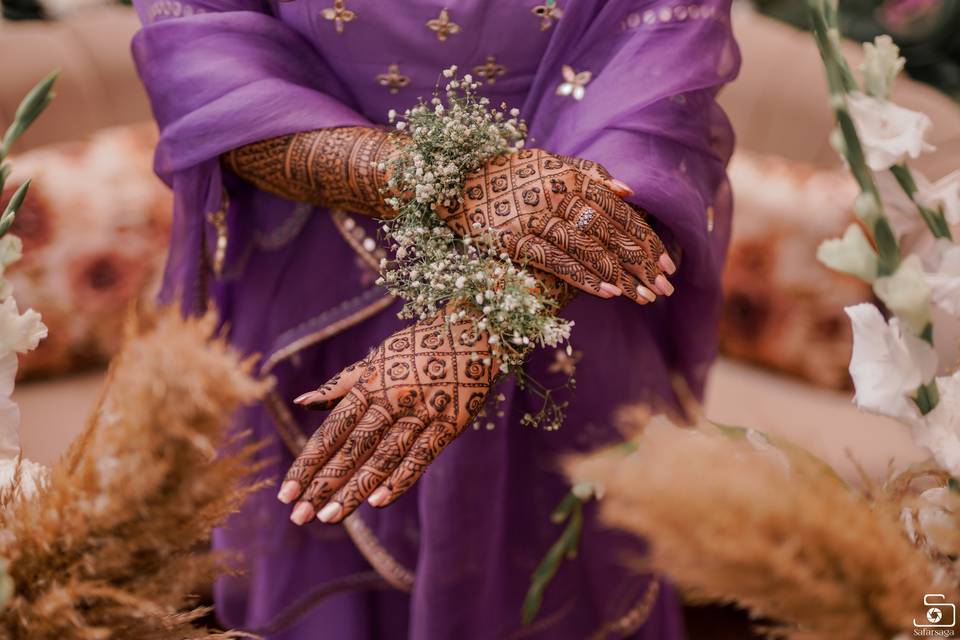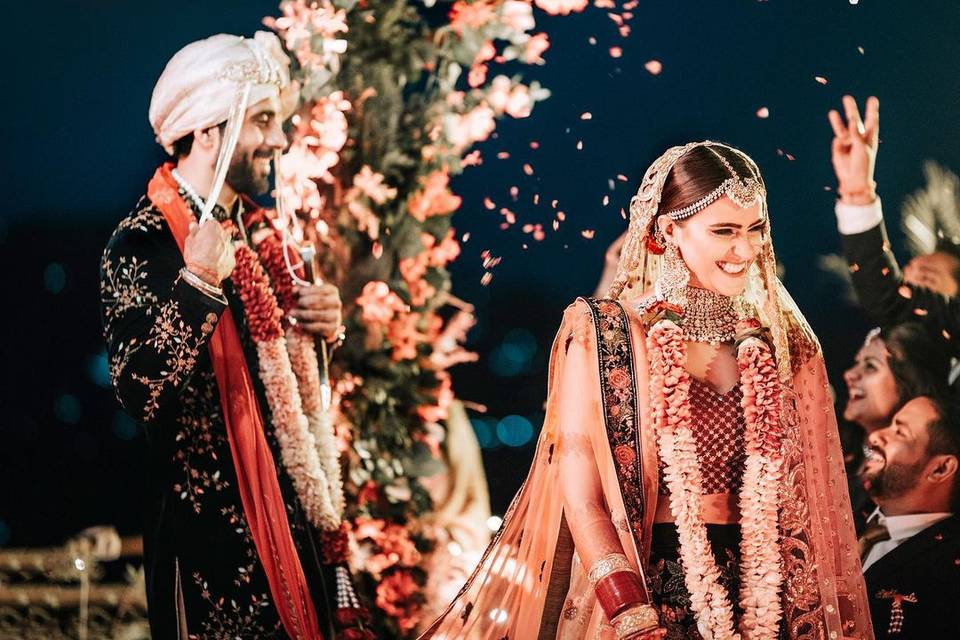Tamil Wedding Rituals That Make This Wedding Ceremony So Unique!
A Tamil wedding stays true to the ancient rituals and ceremonies highlighted in the Vedas. This is why a Tamil wedding is like no other Indian wedding you’ve ever seen! Keep reading to know about what to expect!
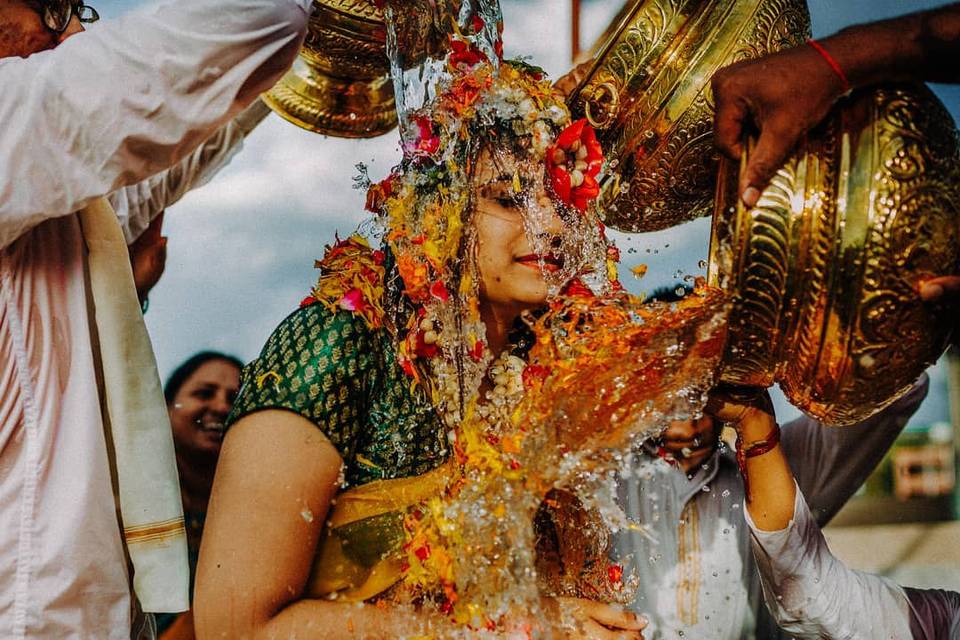
Picture a bride in a stunning Kanjeevaram saree that rivals the sun rising behind her. Picture old South Indian temples, chilly morning air, and the tranquil sounds of a havan fire crackling away as two people pledge to spend their lives together. This is what you get in a Tamil wedding.
With rituals and cultural norms that are vastly different from other Indian weddings, the Tamil wedding is one that prioritises serenity and spiritual union over pomp and splendour. The rituals in this wedding date back to the Vedic Age and have hardly been modernised. So, if you’re about to attend a Tamil wedding, don’t go there expecting a Bollywood style Sangeet or over the top décor! Go there expecting much, much more.
1. Nakshatra Porutham

A Tamil wedding cannot take place without the matching of the horoscopes! When families are scoping out prospective grooms, this is one of the first places they start. More often than not, families get in touch with a trusted astrologer as laymen don’t really know how to find a marriage date from Kundli. As this pre-wedding ritual is often non-negotiable in many families, astrologers start by matching the Nakshatra, and only then do they approach families with pictures of prospective grooms and brides!
2. Exchanging the marriage agreement
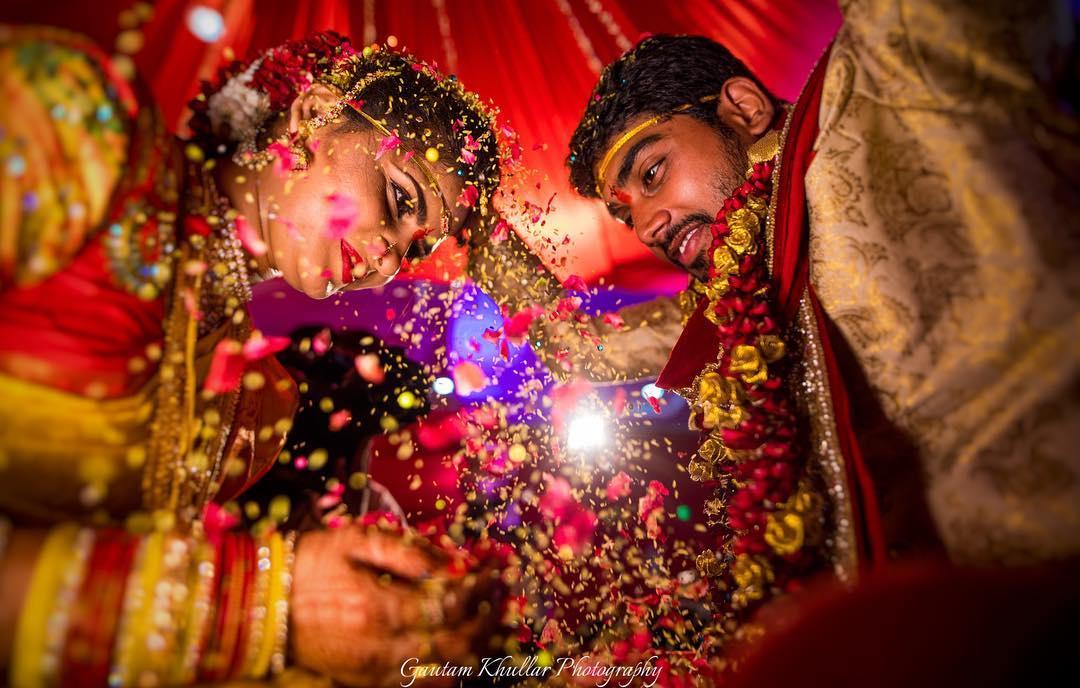
Once the families have picked each other, their astrologers draft marriage agreements. The bride and groom’s families then meet and exchange their agreements on a tray filled with banana leaves and gifts. Many families use traditional ring ceremony trays for the same.
3. Panda Kaal Muhurutham
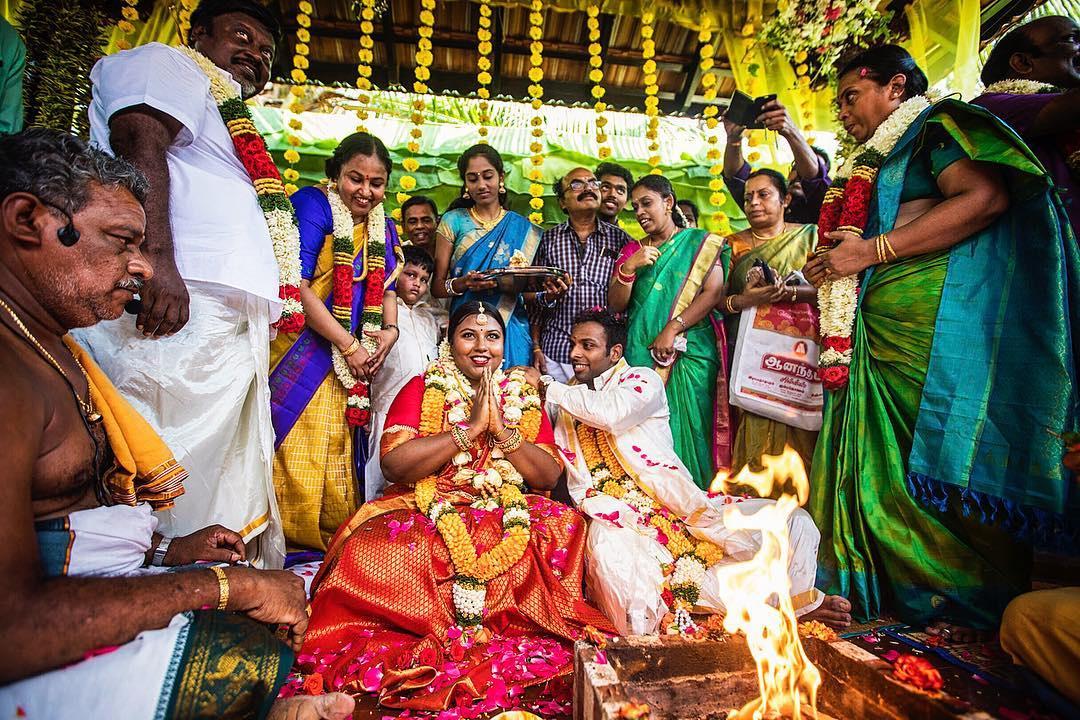
During this ceremony, the bride and groom visit their temples to seek the blessings of God. Often, this ceremony takes place just a day before the wedding and is an intimate one, observed only by the close relatives.
4. Sumangali Prarthanai

In various cultures throughout India, one seeks the blessings of older family members before any major event. In this ceremony, the bride seeks blessings from all married women in her family, to ensure that her marriage is without any obstacles.
5. Pallikal Thellichal

This ritual takes place to ensure that the couple’s lives are filled with prosperity and good fortune. During this ritual, 5-7 married women decorate earthen pots with sandalwood paste. These pots are filled with grains and a dollop of curd. While this is taking place, a member of the family also draws an intricate Kolam (akin to a rangoli, this is made of rice powder) in the home to ensure God’s goodwill.
6. Vrutham

During this ritual, the groom seeks his elder’s blessings as he transitions from a bachelor to a married man. A sacred thread dipped in turmeric is tied on the groom’s wrists to protect him from the evil eye. A similar ceremony also takes place in the bride’s home.
7. Naandi Shradham

During this ritual, the groom’s family comes to the bride’s home one day before the wedding takes place. The family welcomes the groom and even showers him in rose water. While the groom is blessed and fed sweets by his mother in law, the family invites 10 brahmins and feeds them a vegetarian meal. This is done to appease the ancestors.
8. Nishchayathram

This is a formal engagement ceremony that takes place in every Tamil wedding. It begins with the groom’s family arriving at the venue and gifting a lovely saree and jewellery to the lucky lady. The families then pray to Lord Ganesh for His blessings. The family also performs an Aarti of the bride, and tie in grains, leaves, coconuts, turmeric and betel nuts in the pallu of her saree.
9. The wedding itself

Once all of this is done, the wedding itself takes place. Their wedding day begins with the Mangal Snanam, during which married women apply turmeric paste on the bride and groom before dousing them in holy water. The bride performs the Gauri Puja right before heading to the mandap. At this point, the groom commences with another ritual called the Kashi Yatra, during which he announces his intention to leave the wedding and head to Kashi to become an ascetic. The father of the bride intercepts him and asks him to marry his daughter.
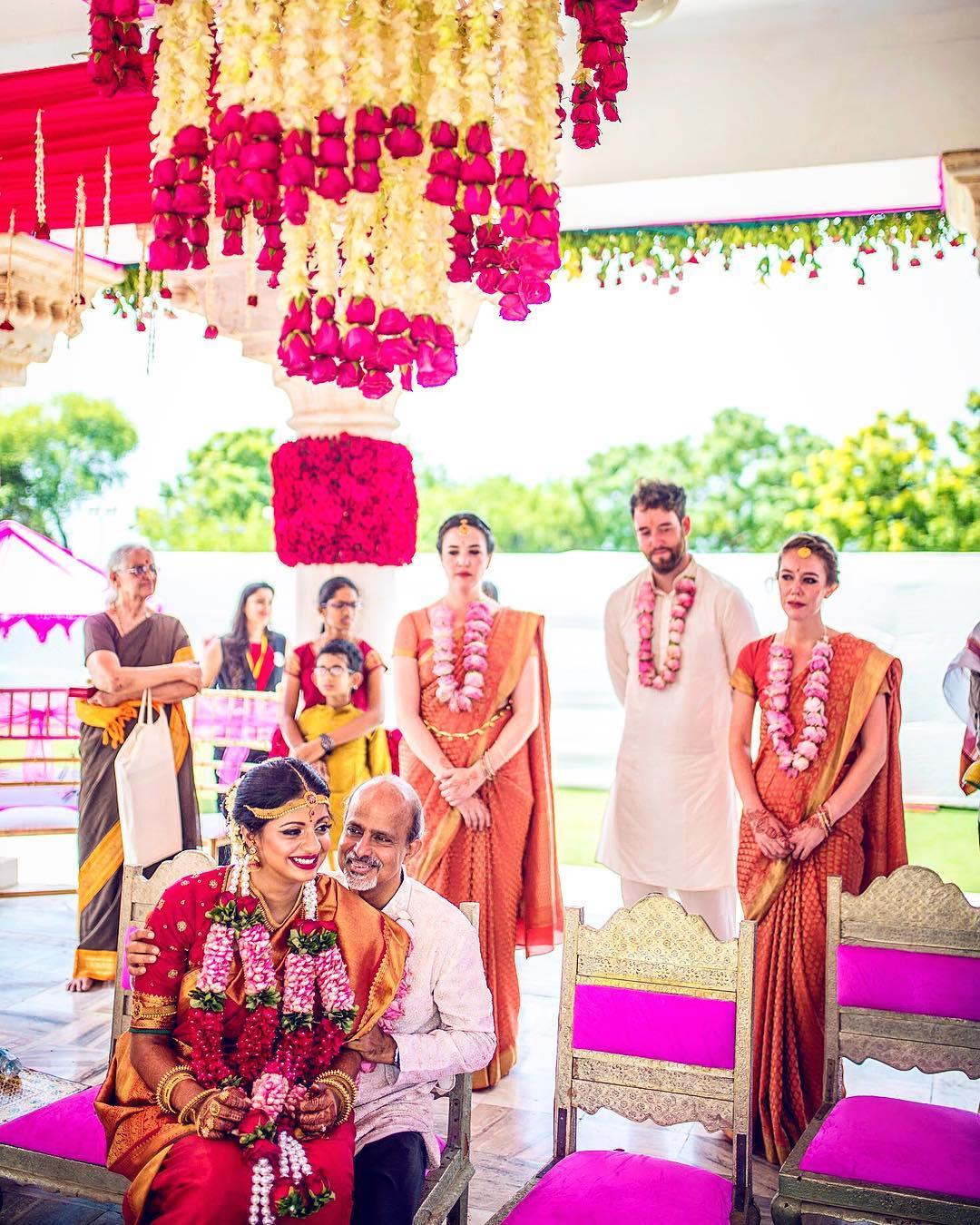
The rest of the ceremonies in a Tamil wedding are quite similar to any other Hindu Brahmin wedding. The couple performs a Jaimala and then takes part in the Kanyadaan ritual, during which the bride and groom’s hands are tied with a sacred thread. Once the Kanyadaan is complete, the bride’s in-laws present her with a saree, which she must wear once the groom applies vermilion in her parting. Once she returns, the couple takes their 7 Pheras around the Havan Kund.
With this, she is married to her spouse! Most families then hold a reception ceremony to celebrate the marriage, and the Tamil wedding ends with a bang!
If you’re planning on attending a Tamil wedding soon, be sure to wear temple jewellery to fit in! Get in touch with our jewellery vendors to find the perfect pieces.

